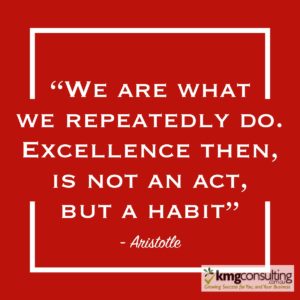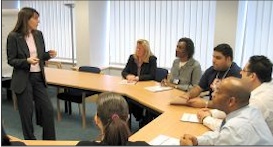You’ve often heard me mention the importance of writing down your business goals. That isn’t just because it’s easy to forget. There’s a lot more to it and there are some very important reasons why you have to write them down.

I though in today’s blog post, I’d share my thoughts on this and hopefully inspire you to write down your own goals going forward. By the way, this works for any type of goal, not just your business goals.
The simple act of setting a goal, even if it’s just in your mind, doubles your chances of success. That’s a pretty big deal in itself, isn’t it? If you take it a step further, and actually write those goals down, you’re 10 times as likely to succeed. Read that last line again please. That’s right…you can increase your chances of making it by 1,000%. That’s mind-blowing.
There are a few different mental and psychological processes going on here that start to give us a glimpse into why it is so important and effective to write our goals down.
The first is that it’s a lot easier to remember something that we’ve written down. You’ve experienced this first hand with your grocery list. When you make a mental list of 10 or 15 things, you’re likely to forget about half of them when you get to the store. If you write out the list on the other hand, and then end up forgetting it on the counter, you will remember the vast majority of the items you needed. This is explained through the fact that information has to be moved from one area of the brain to another to turn it from thoughts into written words on a page.
A process called encoding is also involved. All of this helps you retain and store the information better. It’s the reason we’re asked to take notes during lectures in college.
Last but not least, when you write down your goals, you have something you can review regularly. This adds another layer of cognitive processing and increases your chances of success even further.
Sadly, only a very small percentage of people make the time to regularly review and evaluate their goals. The ones that do are some of the most successful and highest achieving people out there. In other words, it’s something we should do as well.
To recap, here are the three steps to massively boost your success in achieving your business (and other) goals:
- Start by setting smart goals.
- Write them down in as much detail as possible.
- Set aside some time to review them regularly. This could be weekly, or even daily.
Give it a try for this coming quarter. Set yourself a goal. Be specific. This could be something like finally creating that first paid product or adding an extra $500 to your bottom line. Decide on a deadline by when you’ll reach your goal and how you plan to get there. Write it all down and look at it every morning.
You might even like to use the 12 Week Sprint Planner that we use in my coaching program, to help you reach your big goals in a sprint! Check it out here: https://kmginfo.link/12week It’s one of my most popular and useful products.
This will help you stay on track and make time in your busy day to work on making progress towards your (written down) goal.

 Are you ready to take your business to the next level and watch some explosive growth unfold over the coming months? Great.
Are you ready to take your business to the next level and watch some explosive growth unfold over the coming months? Great.



 So you now have just three months left to achieve your 2019 goals! Are you on track? Or still overthinking your plan for what needs to be done?
So you now have just three months left to achieve your 2019 goals! Are you on track? Or still overthinking your plan for what needs to be done?
 Whether you are starting a new year, a new quarter, a new job or a new role, a new project or just a new day,
Whether you are starting a new year, a new quarter, a new job or a new role, a new project or just a new day, 





